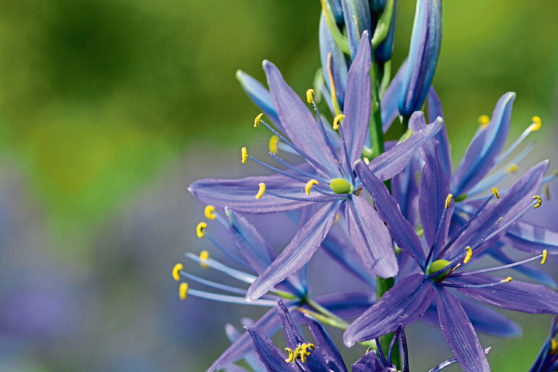
Autumn used to signal the start of a big clear-up in the garden, when the year’s growth was cut down and added to the compost heap. Now, though, there’s a trend to leave the garden as it is and let it sit out the winter under old leaves and bare stems.
Where you sit on the scale between tidiness and chaos is a personal choice and it can be dictated as much by what you grow as it is by fashion or a desire to give wildlife a cosy winter home. If you garden on free-draining soil and grow verbenas and grasses, these will stand well through the colder months, providing seeds for birds and punctuation marks that look attractive when rimed with frost.
In damper areas, where foliage is soft and lush, decaying leaves turn to mush and offer a refuge for slugs, so clearing it away is the more practical option.
But not all perennials fade to nothing during the winter. In mild areas some, such as oriental poppies and acanthus, hold on to their leaves for 12 months and in my garden the Persicarias are among those summer flowers that are still going strong.
I grow pink-flowered Persicaria bistorta “Superba” along with dark red Persicaria amplexicaulis “Firetail”, and both are semi-evergreen, able to withstand fairly cold weather without becoming dormant. Both are good growers, but its “Superba” that’s the most vigorous, not only growing rapidly into large clumps but also seeding itself around.
As Persicaria starts flowering early in the year, seedlings from spring are large enough to dig up and transplant. I have homes for these at the moment but in future I’m going to have to control the population to prevent it from taking over.
Meanwhile, many of the oriental hellebores, which don’t usually get going until after Christmas, are already in flower. In fact some have been flowering almost non-stop and I think that’s because they are growing in exactly the sort of damp and semi-shaded conditions they enjoy.
These, too, provide seedlings and I’m going to move some of them to the new border to fill in spaces there, although I need to leave some bare patches for the camassias when they arrive.
Camassias are native to the damp prairies of North America and, although they last for only a few weeks in May and June, they are something I’ve been longing to grow for a very long time. I’ll be planting the bulbs in a few weeks and I’m looking forward to seeing their tall, blue flower spikes growing among the primulas I’ve already added.
It’s tempting to fill new spaces completely and I’m constantly having to fight the urge to pack in more plants, but do that and I’ll end up having to take some out later so it’s best if I leave gaps now to allow existing plants to grow.
As autumn takes it toll on the garden, our expert Agnes Stevenson savours the perennials braving the chilly airs and providing pockets of colour

Enjoy the convenience of having The Sunday Post delivered as a digital ePaper straight to your smartphone, tablet or computer.
Subscribe for only £5.49 a month and enjoy all the benefits of the printed paper as a digital replica.
Subscribe